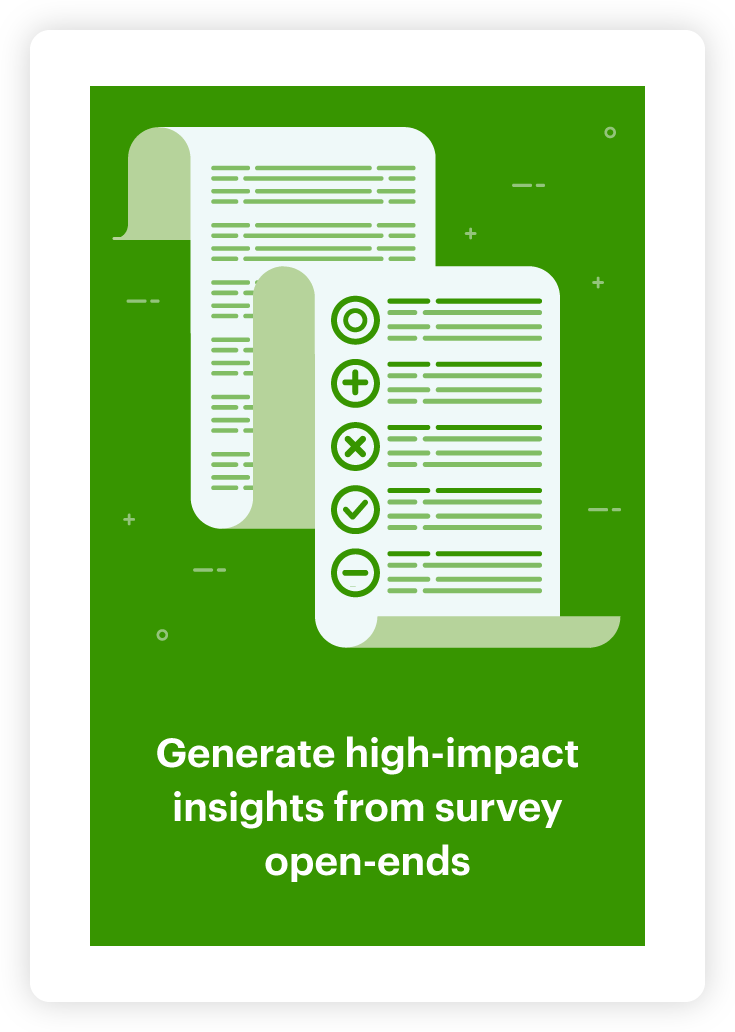How retail feedback analysis improved in-store experience and NPS

In the bustling heart of New York’s retail district, a department flagship store renowned for its grandeur and customer-centric ethos embarked on a transformative journey guided by customer retail feedback. Utilizing the net promoter score (NPS) as its compass, the store sought to navigate through the ebb and flow of customer satisfaction, aiming to offer the best in-store experience.
However, NPS in retail settings can be fickle. This in-store customer experience example showcases what happens when retail feedback turns sour. More importantly, it demonstrates that even the most prestigious brands need a strategy for how to improve customer experience in retail stores.
The challenge: A dip in retail NPS
The retailer’s in-store experience team conducts weekly NPS retail surveys of all visiting customers. This NPS program not only generates a weekly score; it harvests customers’ likes and dislikes. It’s this qualitative feedback that enables the retailer to make improvements.
Analyzing this feedback proved critical when NPS around in-store experiences started to drop. This flagship location, a beacon of retail excellence, witnessed a sudden dip from an impressive NPS of 75, indicative of high customer satisfaction, to a concerning 60, signaling areas of distress that needed immediate attention.
Insights from data: Analyzing in-store customer experience examples
What was driving this fall in NPS? A deep dive into qualitative retail feedback from customers visiting the store highlighted critical areas for improvement.
Initial analysis showcased negative feedback focused around “messy displays” and “empty shelves”, with these two phrases appearing 3.3x and 2.5x more respectively in the latest responses.
Additionally, customers were 4.1x more likely to talk about “unhelpful staff”. These metrics pointed to a dissonance between the store’s legendary service standards and current customer experience.
Strategic solutions: Immediately understanding and acting on retail feedback
Quickly analyzing customer feedback using Relative Insight’s text analytics software enabled a rapid response. The brand put in place a multifaceted strategy to reverse the decline in NPS and improve in-store experience.
This plan of action included an extensive staff retraining program. This re-education aimed to enhance product knowledge and improve how staff engaged with customers.
Additionally, the department store revamped its hiring process. Its reimagined recruitment aimed to attract individuals who not only possessed the requisite skills, but were also aligned with the store’s commitment to customer service excellence.
Outcome: Restoring positive in-store experiences
The results were both immediate and impactful. Following the implementation of these initiatives, analysis of subsequent retail feedback revealed a resurgence in positive responses.
Use of phrases including “helpful staff” (14.5x), “efficient service” (4.9x) and “immaculate displays” (17.2x) all overindexed when compared with previous surveys.
This translated into the department store’s NPS. After falling as low as 60 the score improved to 68; still below its previous high but trending in the right direction.
How to improve customer experience in retail stores
This journey underscores the indispensable role of customer feedback in the retail landscape. By closely listening to and acting on customer insights, retailers can forge experiences that not only resonate with their audience but also cultivate loyalty and advocacy.
In New York’s fiercely competitive retail scene, this flagship store’s story serves as an in-store customer experience example for others. Success lies through implementing rigorous programs that emphasize customer service excellence, plus evolving strategy based on the needs and expectations of your customers.
Seeing fluctuations in your NPS and can’t decipher why quickly enough? Speak to one of Relative Insight’s text analysis experts to find out how we can help.
